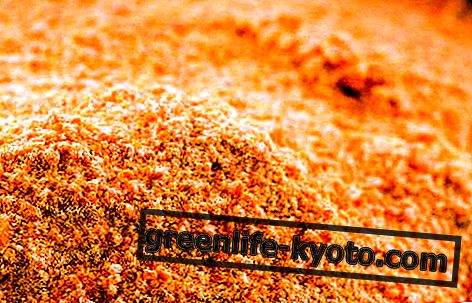
What is Pau d'arco?
In Portuguese, the Lapacho is called Pau d'arco, "string baton", but has many other names, such as the tribal ones of Taheebo and Ipe Roxo or Queschua. In phytotherapy the bark is used, specifically the inner part, bark that as soon as it is detached from the trunk, grows back quickly without causing damage to the plant itself. There are many varieties of Pau d'arco, of beautiful colors, red, yellow, pink, but it is the variety with pink-purple flowers, from South America, also known as Tabebuia Avellanedae, which has the strongest phytotherapeutic action.
What can the Pau d'arco be useful for?
The Lapacho or Pau d'arco, precisely by virtue of its purifying and anti-inflammatory properties, can also be used against diseases such as bronchial asthma, prostatitis, diabetes, bone marrow inflammation, Parkinson's disease, rheumatism, arthritis, varicose veins, skin problems, anemia, arteriosclerosis. And again inflammation in the mouth and gums, cystitis, herpes, stomatitis, lupus, Hodgkins disease. It is a valid antibacterial, antiparasitic, fungicidal, anti-inflammatory, depurative and immunostimulant; slightly diuretic and sedative, studies show that Lapacho has significant beneficial properties in combating tedious candida infections. It also has an antioxidant action similar to that of echinacea or ginseng.
The main constituents of the Pau d'arco: the quinones
The main constituents of the Pau d'arco are eighteen different quinones, a class of organic compounds formally derived from aromatic compounds (such as benzene and naphthalene), which are rarely found together in the same plant: of these, the naphthoquinones, are considered the most important. Quinones have a dual biological importance. First of all they are found in the nucleus of different organic substances, such as in coenzyme Q and vitamin K, and are important for the proper functioning of the metabolism . Quinones are at the same time very reactive molecules. This makes it substances with a strong bactericidal, antifungal, anti-inflammatory power. In nature, in addition to Pau d'arco, there are other examples of compounds with similar biological or pharmacological properties, such as bearberry, walnut tree, rhubarb, among others. The Pau d'arco also contains a special combination and concentration of mineral salts such as potassium, sodium, calcium, magnesium, phosphorus, zinc, molybdenum, copper, iron, cobalt, boron, gold, silver, strontium, chromium, silicon, manganese, barium, nickel.
How to use the Pau d'arco?
The Pau d'arco is found on the market in the form of capsules, tea, decoction, extract. In any case, the doses and the administration must be personalized carefully, as some people may have allergic reactions to the plant, while others must dose their decoction gradually. A curiosity: the bark of the Pau d'arco tree has been used as a medicinal remedy for over a thousand years, known to the Indians of Brazil and the Incas. According to stories of the time, both peoples used it to treat many diseases, including degenerative ones.













